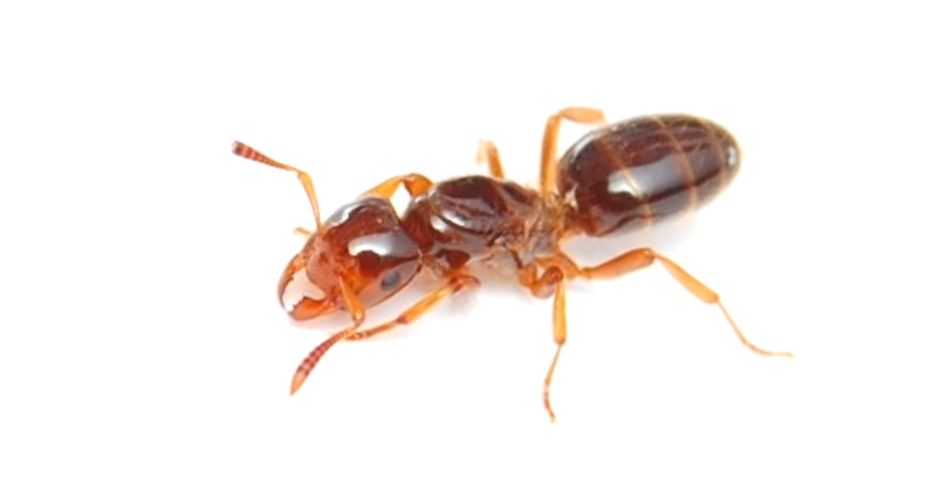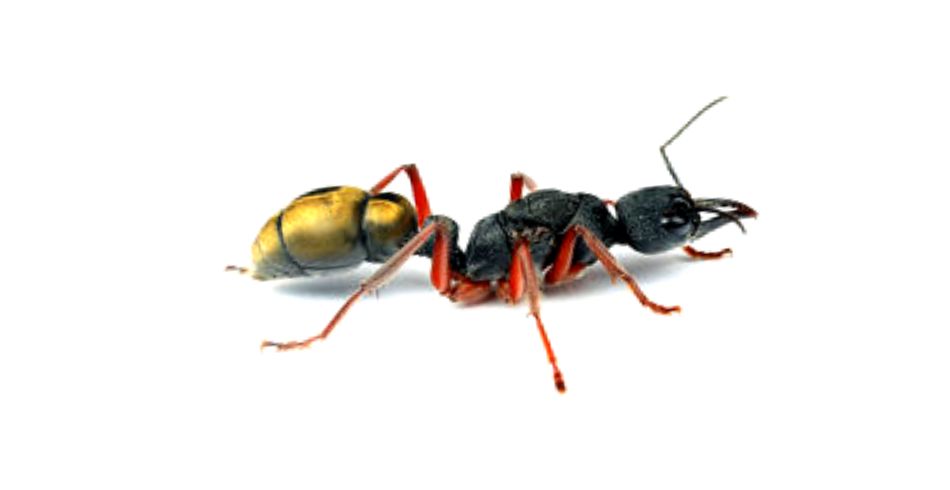What does a divine ant look like? Have you ever seen one? To us, this is a no-brainer; there is only one candidate: Golden Ants.
Golden ants are ants with golden color on the exoskeleton or body parts as one of their primary distinguishing features. Some yellow ants are in this classification. Examples of gold ants include the Carpenter ants – Camponotus Sericeiventris species, yellow ants, and golden-tailed spiny ants.
In this quick 3-minute read, we’ll go over different types of golden ants, why they are so special to us, if golden ants are harmful, and, if you see them, how you can get rid of them.
I wouldn’t want to miss this one if I was you. More Below.

What are gold ants?
Gold ants have a conspicuous full or partial golden body color. This feature is observed in several ant species of different body sizes and living in varying habitats globally. Some, like the carpenter ants Camponotus sericeiventris species, live in wood, but most gold ants nest in mounds.
What are some ants that are golden colored?
There are several golden ants, including the yellow and the partially golden colored. They include; carpenter ants – Camponotus sericeiventris species, the recently documented rare golden tree ant, the golden tail sugar ant, and the golden-tailed spiny ant. Also, yellow ants loosely fall in this category.

Yellow crazy ants – Anoplolepis gracilipes
Yellow Crazy Ants are yellowish, about 3mm long, and very aggressive. Yellow ants are the only invasive species whose female workers are reproductive. These ants leave pheromone trails for nestmates. They make rapid, erratic crazy movements if disturbed. They don’t bite but rather spray formic acid irritating to the eyes.
They have long legs and antennae compared to their small body.
The yellow crazy ants eat other insects and small animals for protein, forming large mounds in open fields.
Super colonies of yellow crazy ants are a menace to the environment.
They tend to aphids because they feed on honeydew excreted by them. Aphid attacks on plants inhibit growth and productivity. (Source, Source, Source)
Larger yellow ants – Citronella ants (Acanthomyops Interjectus)
This ant is yellow, about 6mm for a worker and 9mm for the queen. It is also referred to as the foundation ant because it makes nests in structural foundations. Places you can find citronella ant nests include slabs, patio blocks, porches, damp crawl spaces, concrete patios, and concrete blocks.
Citronella ants are polygenic.
The female winged ants resemble wasps when they still have wings which they shed after mating and establishing new nests. (Source)

Yellow meadow ant – Lasius Flavus
The yellow meadow ant is about 3-4mm long. Their color is pale to golden yellow. They spend most of the time inside mounds dug in moist soil, and they rarely surface, hence the pale golden color. When they do surface, they forage very close to the nest.
Inside nests, they feed on honeydew excreted by root-eating aphids.
They’re common in Central Europe, North Africa, Asia, and North America. (Source)
The smaller yellow ant – Lasius claviger
The smaller yellow ant is smaller than the larger one and measures approximately 3-4mm in body length. They’re prolific across the US. They emit citronella odor when threatened or crushed. Winged females perform nuptial flights during the day or at night. They are polygenic.
You can read more about the smaller ant here.

Golden-tailed Spiny Ant – Polyrhachis ammon species
This species is prolific in Australia. Entomologists suppose that the bright golden color on its integument is for reflecting the sun away. The golden-tailed Spiny Ant feeds on aphid’s honeydew and dead insects. These ants mimic the cry of the golden abdomen Australian bull ant.
The sound imitation behavior supplements their defensive mechanism because they do not have stingers like the bull ants.
This species also weaves ant silk.
The Carpenter ants – Camponotus sericeiventris species
Native to South America, this ant inhabits Mexico, Argentina, Brazil, and Uruguay, among other countries. It burrows nests in wood. It’s a large ant ranging from 8mm for minor workers to 17mm for the queen.
These ants don’t bite or sting and spray formic acid from their acidopores.

The rare golden tree ant species – Paratopula bauhinia
The golden tree ant is exclusive to Hong Kong Island and was documented recently in 2016. It’s a beautiful golden ant, a large ant about 7mm long. It lives on trees, starts foraging at dusk, and scavenging continues on low vegetation and human structures at night.
You can read more about them here.
The Golden tail sugar ant (Camponotus aeneopilosus) species
This big ant is native to Eastern Australia. Workers of the golden tail sugar ant are 5-9mm long. It’s black with golden hairs on the gaster. It’s easy to mistake it for the golden spine ant, except it doesn’t have a spine. It forages during the day and lives under large rocks and logs.

Frequently Asked Questions
Below, we answer some of the common questions associated with these heavenly golden ants.
We hope we answer some of yours too!
What is the larger yellow ant?
Based on the size, entomologists have categorized several distinct yellow ant types. The larger yellow ant is the citronella ant, whose unique characteristic is the lemon-like odor it emits when crushed. Other yellow ants are the small yellow ant, the yellow meadow ant, and the yellow crazy ant.
How to get rid of citronella ants
Citronella ants do not forage in kitchens for sweets and other foodstuffs, and Baiting them with human food doesn’t work. Get rid of them by repairing leakages in plumbing. For colonies under concrete slabs, drill holes and inject mild insecticides. Drench mounds. To prevent citronella ants seal cracks or crevices.
How to get rid of yellow ants
Removal depends on the yellow ant species. Control the sizeable yellow ant by injecting or drenching diluted insecticide into crawl spaces or mounds. The yellow meadow ant rarely leaves the mounds, thus best controlled by soaking the soil. Use field pest control methods to destroy the supercolonies of the crazy ants.
What gets rid of golden ants?
The control mechanism depends on species. The Camponotus species that lives in wood is best avoided by fixing water leakages and removing dead wood in or near the house. Since they feed on aphids’ honeydew, they eliminate aphids and starve them to death. Finally, use insecticides indicated for golden ants control.
What do citronella ants eat?
Citronella ants live exclusively on sweet honeydew produced by mealy bugs and aphids. For this reason, they tend and protect these aphids. Citronella ants do not scavenge kitchens for sugary foods like many ant types. Thus, their presence indoors is primarily a nuisance.
Are citronella ants harmful?
Citronella ants neither bite nor sting, and any disturbance to the nests makes them flee. However, they dig huge mounds that can cause house foundations or basement structural weakness. They tend to aphids and mealy bugs. Large aphid infestations cause stunted plant growth, whereas mealy bugs damage roots.
Are yellow ants poisonous?
Yellow ants do not bite nor sting, so they do not inject ant venom. They spray formic acid in self-defense against rival ants, a perceived enemy, or to subdue prey. Exposure to large amounts of crazy ants’ formic acid causes eye irritation in humans, animals, and pets.
